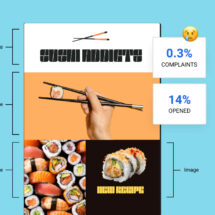15 tips for writing amazing email marketing content that increases clicks
By Sean Tinney January 27, 2022
Your audience is probably short on time and skimming through emails. They may get several emails an hour throughout the day. To give yourself a fighting chance in the inbox, you need strong email marketing content.
According to research done on email click rates, the data has shown:
- 53% of marketers say low click-through rates are their biggest email marketing challenge.
- 73% of marketers say click-through rates are a key metric for evaluating campaign effectiveness.
- The average email click-through rate is 7% in the US.
Getting more clicks should be a central part of your strategy. Here are 15 tips on how to write effective email marketing content to boost click-through rates.
Format for Clarity
When your audience is in a hurry, the right formatting will make the emails easy to digest. Plan for readers to skim big points before coming back to read some sections for details.
Tip 1: Target the audience’s needs/pain points
First, your emails should have a singular focus centered around the needs of your audience. Present a problem and clearly answer how you can help within the email.
Your audience doesn’t care about your company’s interests or needs. So, avoid product-centric messages.
Spur people to act by proving it is in their best interest. You can use emotions and logic to sway your audience, targeting things that affect them. Focus on their pain points, and your audience is far more likely to listen.
Tip 2: Use headers to highlight benefits
Headers grab attention and make your content easier to skim. You might think skimming is bad, but it actually helps draw readers into the fine print of your copy.
People only take a few seconds to decide if an email message aligns with their needs. So, use that knowledge to your advantage. Pull out the main benefits of each section with your headers so they will slow down to get the details.
Benefit-driven header example:
See how we grab your attention immediately with a strong, benefit-driven headline. You don’t need to read the content of the email to understand what this newsletter is about.
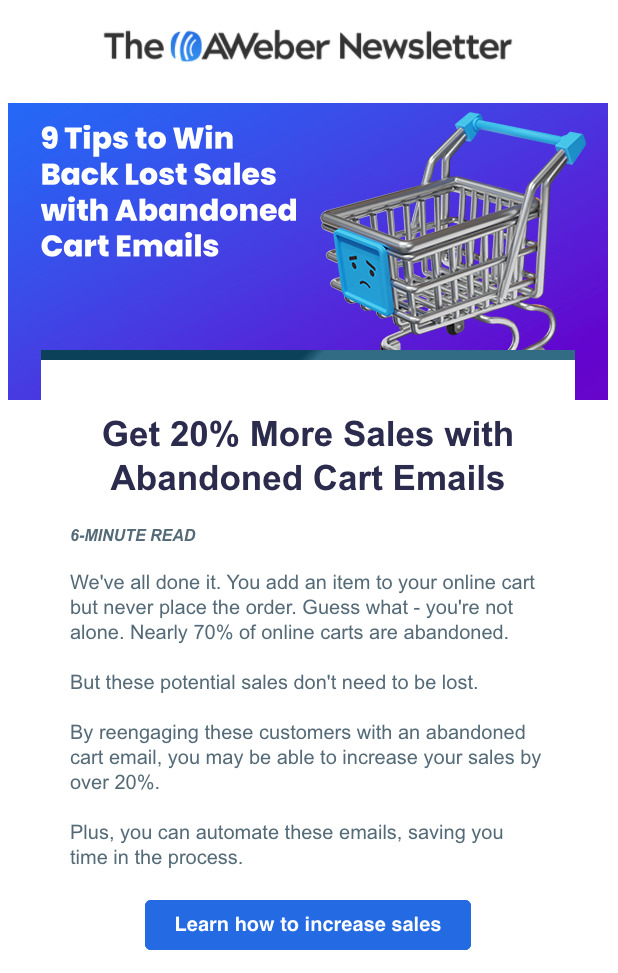
Tip 3: Keep paragraphs short and concise
Big blocks of text are out. Short paragraphs and sentences are in.
Keep paragraphs roughly three sentences long at most. People can get overwhelmed with large text blocks and back out without even giving the content a chance. And don’t just write for desktop; blocks of text quickly fill mobile screens because of the smaller format.
Short and concise paragraph example
This email from Wistia does a great job breaking out their email content into small paragraphs, making it easy for the reader to digest each section.
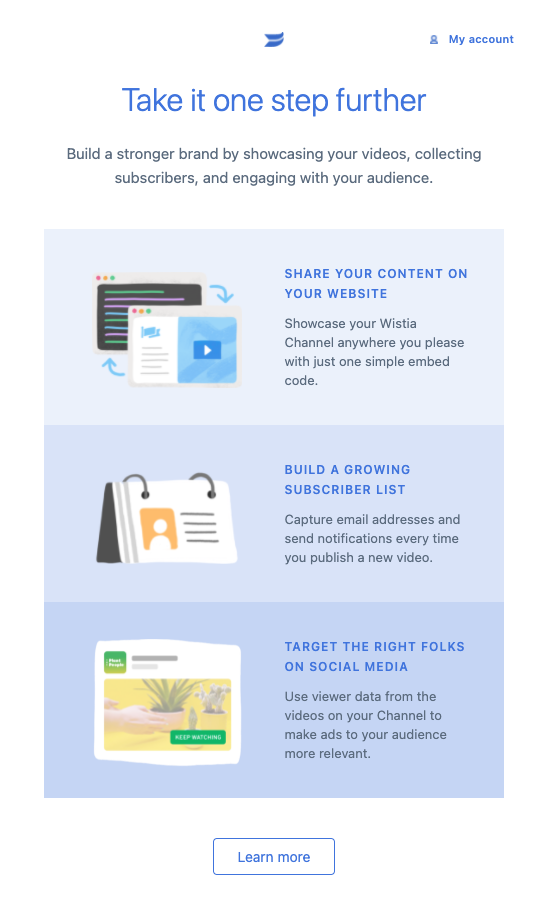
Tip 4: One main idea per paragraph
Don’t present multiple ideas in a paragraph. Typically, you should break the paragraph to start a new idea. That will help keep your paragraphs manageable.
But that doesn’t mean that one idea must be contained in a huge paragraph either. Break bigger ideas into smaller bites for easier reader digestion. You are not writing a research paper, so there is a lot of flexibility in email formatting.
Occasionally, try a stand-alone sentence to snag attention and break up the text.
Tip 5: Keep mobile in mind
Mobile accounts for nearly half (43%) of all email opens. However, if you aren’t formatting your emails for mobile, readers are not likely to consume your content. Poorly formatted emails will lead to extremely small text, forcing readers to pinch and scroll just to see your content.
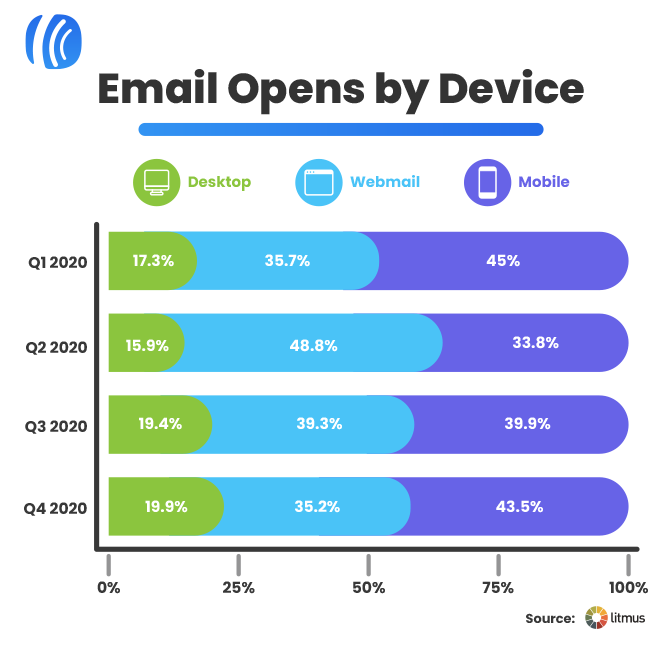
Mobile formatting means bigger text for easier reading on the small device screen. Naturally, this also means bigger buttons and links for easier clicks as well.
Always use a responsive design email template that is mobile-friendly, or you risk alienating half of your audience.
Tip 6: Use images to help tell your story
Images offer visual intrigue. People process images much faster than they read text. Images help keep eyes on the page and provide a little context for your message.
Always make sure your images are compressed so your email loads quickly. Emails that are slow to open aren’t likely to get as much interaction because people will back out.
Image example:
This email from Outer uses the perfect image to help enhance their story that life outside is better.

Connect with Your Writing Style
Your writing style should connect to the audience. Hone your writing to be appealing and convincing.
Tip 7: Have a conversation
Write your email like you’re talking to a friend. Emails shouldn’t be indistinguishable from ads. They should feel comfortable and personal.
Start building a relationship with a voice that shows brand personality and encourages trust. The best way to have a conversation is to write copy that keeps the audience’s needs, perspectives and interests in mind.
We already discussed focusing on the audience’s needs (Tip #1), and we will look at the importance of list segmentation below.
Tip 8: Show your personality
In order to let your brand personality shine through, you really need to establish your personality. How is your brand different from the competition? What traits do you want to emphasize through your voice?
When you know your brand’s personality, you can create a voice that remains consistent with the rest of your customer experience.
For example, if you are a trendy company, your voice may be quippy with plenty of clapback. If you are a lighthearted brand that doesn’t take itself too seriously, then your writing may be funny or entertaining. More serious companies might have warm and trustworthy mentor-like voices that stem from years of experience.
Tip 9: Write emails in second person
Writing your email marketing content in second person makes the reader feel like the owner. This is the “you” perspective.
Let’s take a look at the other perspectives:
Talking in first person (“I’m excited to announce…”) can come across as too informal. This voice makes the reader wonder who the “I” refers to unless it is sent from a very specific person (like a special message from the CEO).
Third person (“CompanyXYZ is excited to announce…”) tends to be overly formal for email. Third person is typically reserved for press releases, news articles, and research papers.
Second person (“There’s something new for you…”) is best for connecting with your audience in email. The second person voice uses the pronouns “you” and “your”. When you use second person pronouns “you” are speaking directly to “your” customers.
Second person email content example:
This Raymour & Flanigan email does a fantastic job of putting the reader into the “story” with “bedroom of your dreams” and “your best rest”. They could have talked about “our mattresses” but instead made their readers visualize themselves getting the best nights sleep.
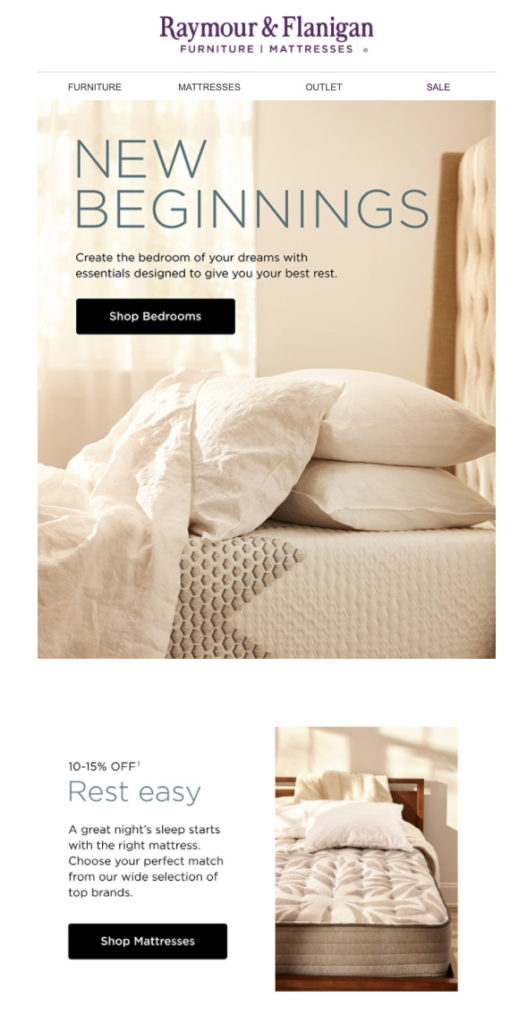
Tip 10: Benefits over features
Don’t just list what your products or services can do; list why your audience should care.
What benefits will your audience experience by following your advice? Keep your message centered around what they will ultimately gain.
Features, like what your products do, are not as important as the advantages gained by using your products. If you are promoting an event, focus on the professional or entertainment value they will experience. If you offer a service, talk about how it alleviates stress or saves them time.
Benefits over features example:
The Momentist email talks about the end result of their content which is getting better at Instagram Stories.
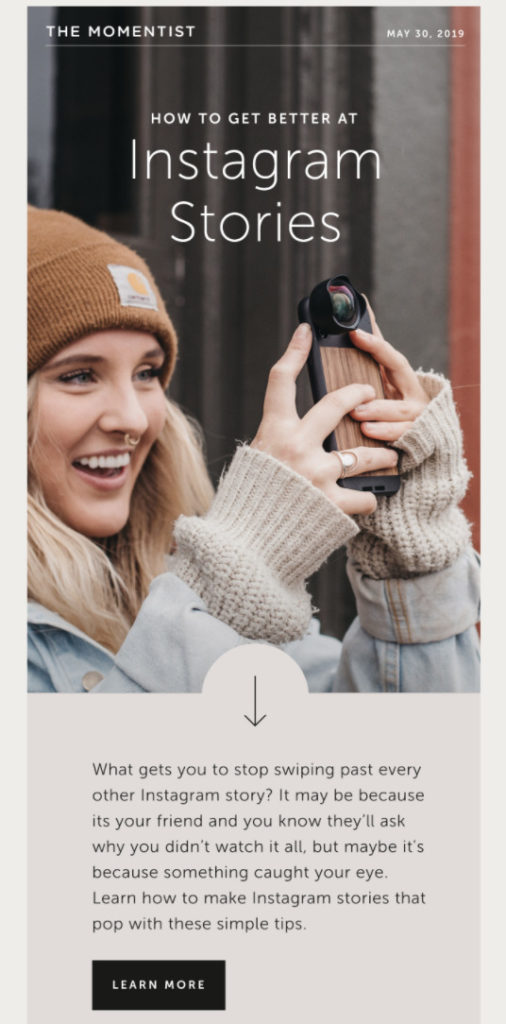
Tip 11: Use actionable language
When people are pressed for time, they want quick answers. What can your audience do right now to improve their lives or workflow in some way?
Actionable language gives them a specific path to follow to achieve a promised benefit (Tip #10).
Always include a main CTA (call to action) that specifically drives them to take a specific action. The CTA could be something like reading more on a related blog post, checking out a specific product page, reviewing products/services, returning to an abandoned cart or sharing your content on social media.
Actionable language example:
This email from Headspace is a great example of an email using an action-oriented CTA.
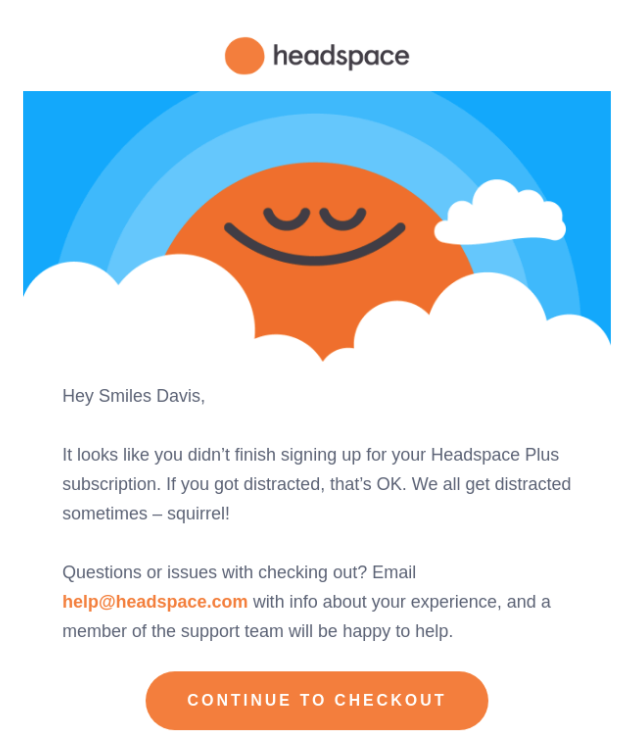
Tip 12: Personalize your message
In order to personalize the message and make it meaningful, you have to know your audience.
Take time to segment your email list so you can send emails to the people who will find them relevant. Your list can be segmented by anything, including:
- Point in the buyer’s journey
- Professional title
- Industry
- Personal interests
- Dislikes
- Pain points
- Site activity
- Email open rate
- Demographic
- Age
- Gender
- Location
Create variations of your message to specifically appeal to different segments so your contacts aren’t getting a one-size-fits-all message.
Email personalization example:
This is what a personalized email should look like. Airbnb is using data they have to send their customers a targeted, personalized email right before their scheduled trip to San Francisco.

Tip 13: Align your subject line and email copy
You want an interesting subject line that grabs attention, but it has to be followed with matching copy.
Don’t bait-and-switch your audience.
Always match the benefits you are highlighting with your headers to claim made with your intriguing subject line. Then, back up those headers with copy that provides valuable substance.
Subject line and email copy that align example:
This Canva email subject line talks about 75+ million images and content, the email then does a great job aligning the headline and copy.
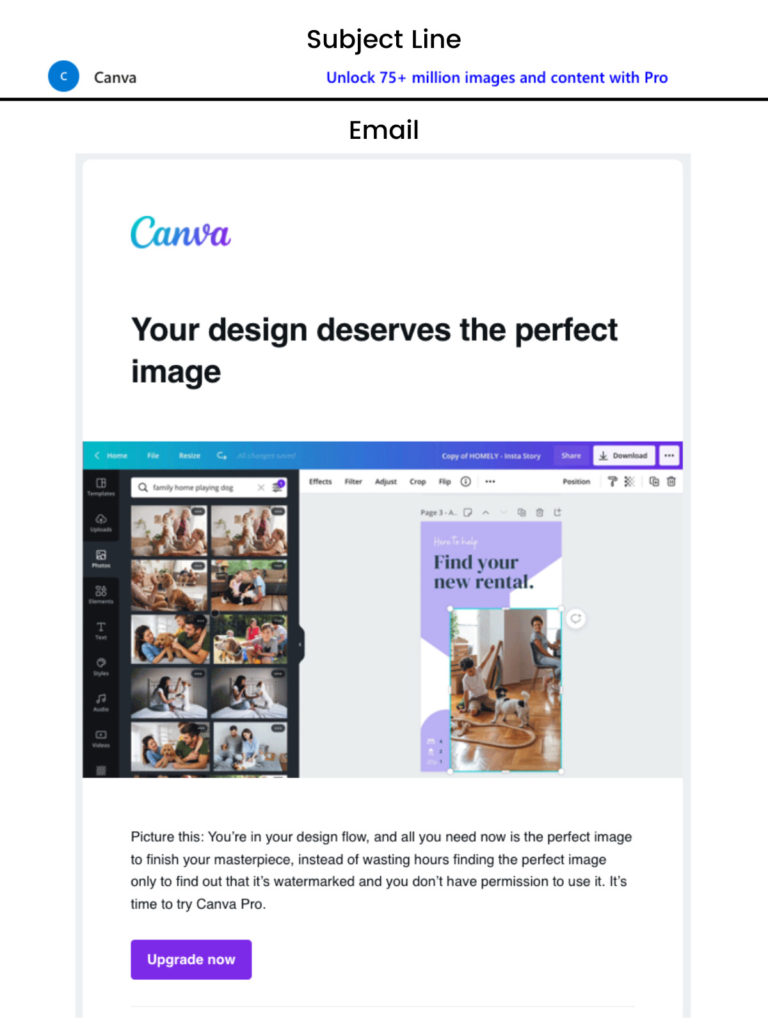
Understand What Works and Do More of It
Ultimately, the goal is to find a strategy and stick with it. You don’t want to guess on every email. You want to know the trends for success and follow a planned strategy.
Tip 14: Test, test, and test again
You should never assume you know what email marketing content your audience wants or why something isn’t working. Make an educated guess and then test to see if your beliefs prove true!
A/B testing is one way you can see how a small change impacts your audience. This requires a very small change, like trying a different button placement or style. You can test your CTAs and header styles to see what provokes the most action from your audience.

Tip 15: Measure results and adjust
You should never allow your strategy to become stagnant. The audience will continue to change, and your competition will grow. So, you will need to remain agile.
Measure your results to see what’s working and what can be improved. Some of the top metrics include:
- Open rates tell you how interesting your subject line was.
- Click-through rates show whether or not your message is appealing.
- Successfully delivered email rates help you know if your email list is healthy or needs to be thinned.
- Unsubscribe rates tell you if people aren’t finding your content valuable.
- Social share rates measure how many find your information valuable (include a share button to track).
Without measuring your results, you won’t know if you are failing or succeeding in your email marketing strategies. When you know your current status, you will have a benchmark to measure against as you work to improve your email marketing engagement rates.
Start Your Powerful Email Marketing Content Strategy
Marketing is crucial for brand outreach. Email marketing provides an intimate opportunity to connect with your audience and spur them to action.
Measure your results and set attainable goals to improve your numbers with a defined email marketing content planning strategy.
Keep adjusting your email marketing approach to improve retention rates and click-throughs. Every email list will experience some natural decay, so put a strategy in place for list growth. Hone your voice and formatting to be as appealing to your audience as possible.
The work you put into researching your audience and testing your marketing theories will pay off. Over time, you will get to know your audience and teach them to expect value from your brand.

